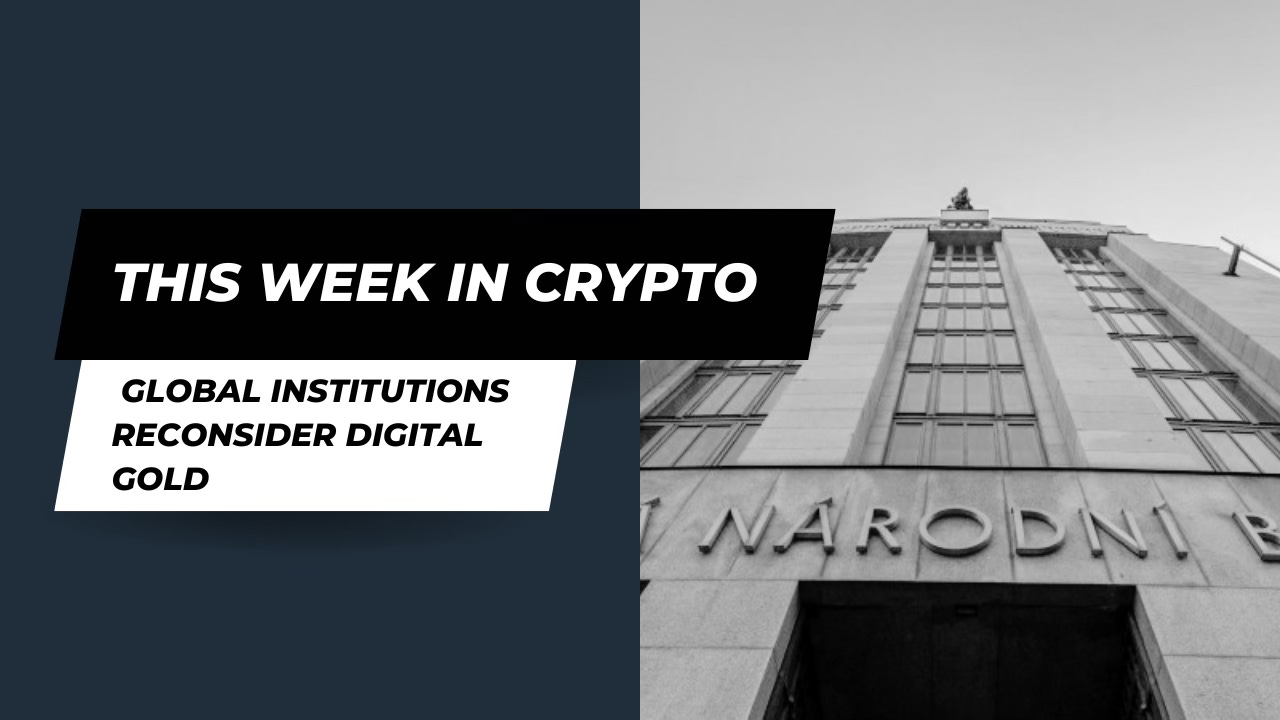Abstract
The cryptocurrency market is undergoing pivotal shifts, with developments ranging from Bitcoin’s growing acceptance as a reserve asset to regulatory approvals for innovative financial products. The Czech National Bank’s decision to explore Bitcoin as part of its reserve strategy marks a potential milestone in institutional adoption. Meanwhile, the SEC has granted approval for Bitwise’s combined Bitcoin and Ethereum ETF, expanding regulated investment avenues for digital assets.
Beyond regulatory progress, financial markets are also witnessing key structural changes. THORChain’s response to its $200 million debt crisis with TCY equity token issuance reflects the increasing role of DeFi in financial restructuring. Meanwhile, political shifts—including the proposed U.S. Sovereign Wealth Fund and new tariff policies—suggest potential macroeconomic impacts on digital assets. Ethereum’s price movements, coupled with MicroStrategy’s pause in Bitcoin acquisitions, further illustrate evolving institutional sentiment. This report analyses these developments and their implications for institutional investors.
Key Developments and Market Analysis
1. Bitcoin as a Reserve Asset: The Czech National Bank’s Exploration The Czech National Bank’s approval of a proposal to study Bitcoin as a reserve asset signals growing recognition of cryptocurrencies in central banking policy. If formally adopted, this move could encourage other institutions to diversify their reserves, further legitimizing Bitcoin’s role as a macroeconomic hedge. Institutional investors should monitor this development as it may influence broader financial stability strategies and central bank reserve allocations.
2. Bitwise’s Combined Bitcoin and Ethereum ETF: Regulatory Milestone The SEC’s approval of Bitwise’s combined Bitcoin and Ethereum ETF marks a significant expansion in regulated crypto investment products. This development offers investors diversified exposure to the two largest digital assets within a single vehicle, potentially increasing institutional participation. With ETFs playing a crucial role in legitimizing crypto investments, this approval reflects growing regulatory acceptance and enhanced market accessibility.
3. THORChain’s Debt Crisis and DeFi’s Role in Financial Recovery THORChain’s decision to issue TCY equity tokens to manage its $200 million debt highlights the evolving role of decentralized financial mechanisms in crisis management. By leveraging tokenized solutions, THORChain demonstrates DeFi’s potential in restructuring financial obligations. This approach may serve as a case study for institutional players considering blockchain-based financial solutions in distressed asset management.
4. U.S. Sovereign Wealth Fund and Tariff Policies: Implications for Crypto The Trump administration’s proposal to establish a U.S. Sovereign Wealth Fund, alongside potential tariffs, could influence capital flows into digital assets. If implemented, a sovereign wealth fund could reshape investment priorities, while increased tariffs may lead to capital flight into alternative stores of value, including Bitcoin and Ethereum. Investors should assess these macroeconomic factors when considering long-term crypto allocations.
5. Ethereum Price Surge and Institutional Sentiment Ethereum’s price recently reached $2,900, with Eric Trump emphasizing its attractiveness as an investment. This bullish sentiment suggests a personal buy signal on his own behalf to inject some liquidity into the surprisingly bearish ETH token this cycle.
6. MicroStrategy’s Pause on Bitcoin Purchases: A Shift in Strategy? MicroStrategy’s decision to pause its weekly Bitcoin purchases ahead of earnings reporting raises questions about institutional demand cycles. While the company remains a significant Bitcoin holder, this temporary pause may indicate a reassessment of its accumulation strategy. Market participants should evaluate whether this signals a broader trend among institutional investors.
Conclusion and Strategic Considerations
As institutional adoption of digital assets accelerates, regulatory approvals, macroeconomic policies, and financial restructuring mechanisms will shape the market landscape. Investors should consider:
Monitoring central bank approaches to Bitcoin reserves for long-term implications on financial stability.
Leveraging regulated ETF products for diversified crypto exposure.
Evaluating DeFi-based financial restructuring solutions in distressed asset scenarios.
Assessing macroeconomic factors, including sovereign wealth funds and tariff policies, for potential impacts on digital asset flows.
Ecoforge Research: Strategic Advisory Services
Ecoforge Research offers expert advisory services to help institutions navigate the evolving digital asset space. Our services include:
Partnerships Consulting: Connecting clients with strategic partners in blockchain and traditional finance.
Product-Market Fit: Advising on the integration of digital assets into institutional investment strategies.
Bespoke Research: Providing tailored insights on regulatory trends, market developments, and risk management strategies.
For customised insights and strategic guidance, contact Ecoforge Research today.




